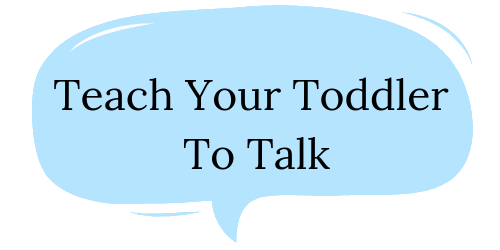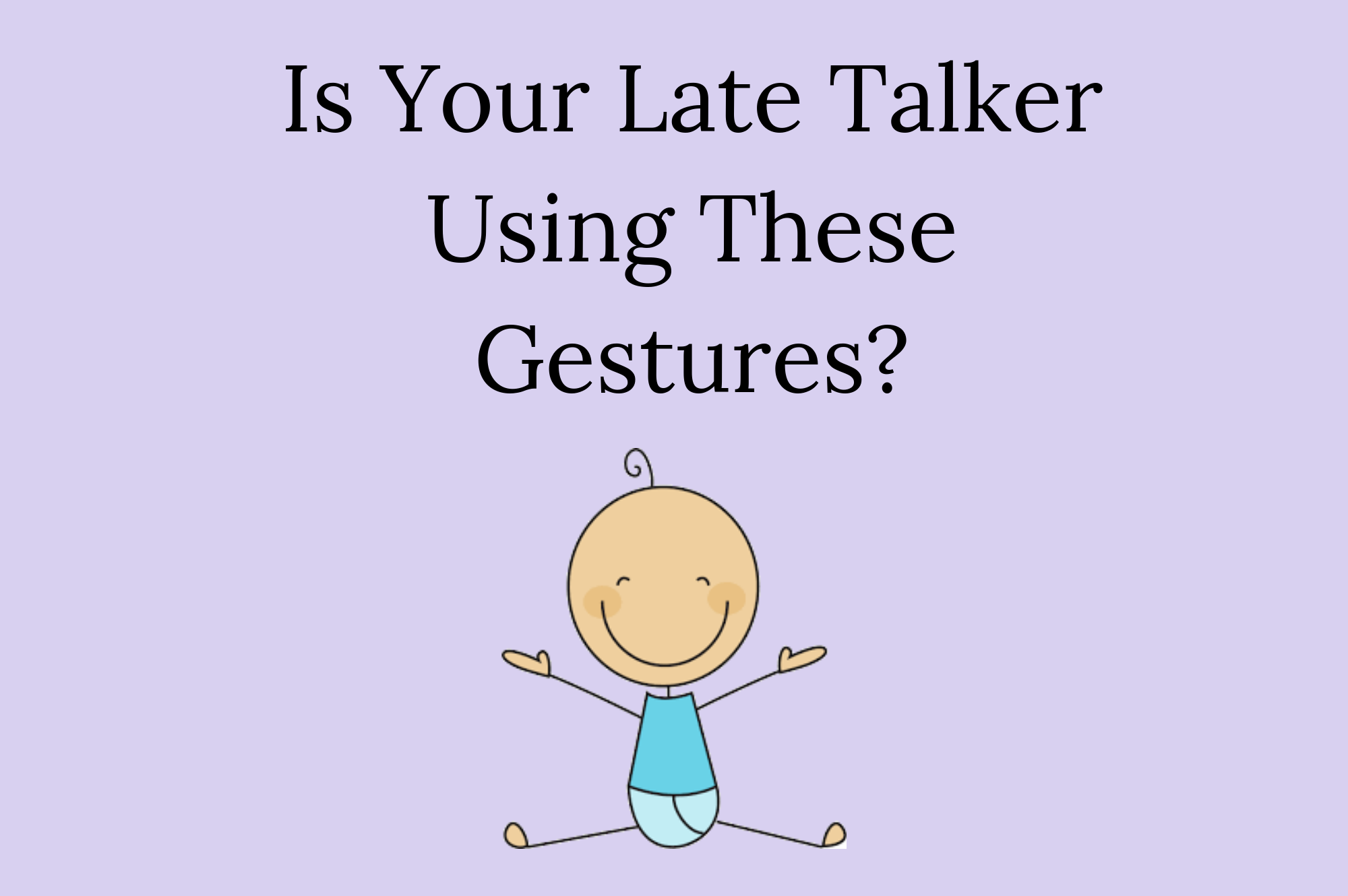When a parent brings their toddler into the clinic to find out if their language is on track, I look at a number of different things to assess their language abilities. I am interested in so much more than the number of words they are (or aren’t) using.
One thing I will ask parents, is what gestures their child is using. Gestures are a super important component of communication. In typical development, babies begin to use gestures to communicate before they start using words. By looking at a child’s development of gestures, I can gain an idea of whether they are more likely to have a language delay or disorder later on.
THE IMPORTANCE OF GESTURES: PREDICTING LANGUAGE ABILITY
- A child’s development of gestures between 9-16 months predicts language ability two years later! So if a child is delayed in developing early gestures, it is more likely their language will be delayed.
- The more a child gestures early on, the more words they are likely to use later in development.
- A child who points to an object will likely learn the word for that object within 3 months.
- Typically, children express ideas in gestures before they express those ideas in words.
TYPICAL GESTURE DEVELOPMENT
The graphic below shows some common gestures and the ages they typically develop.
At 9 months, babies shake their head “no”. You may see this when you offer a child a bite of food, and they turn their head away, and then turn it back again to see if you have moved that food away from them! They also learn to give an object. If they are holding something and you hold out your palm, typically they will give you that item.
At 10 months, babies reach their arms up to tell you they want to be picked up. You also may notice that they reach for objects that they want.
At 11 months, they start to wave; a milestone that often excites parents! They also show objects, meaning they hold up an object they are interested in and look at you as if to say “check this out!” This may seem simple, but this gesture demonstrates that they want to share experiences with others and are motivated by social interaction.
At 12 months, children typically start “pointing” with an open hand, meaning they hold out their arm towards something or someone of interest. They also might tap their fingers together to get your attention.
At 13 months, kids will copy your actions like clapping and blowing a kiss. This important skill of imitation eventually turns into imitating words and sentences.
At 14 months, children start to point with their index finger. There are two types of pointing. They may point to request, like pointing to their water when they are thirsty. They also may point to show you something as if to say “look at that!” At this age, they may also start to use that index finger to make the “shh” gesture.
At 15 months, toddlers typically start to use symbolic gestures that represent words. They may nod their head or do a thumbs up to say “yes”, or put their hand up to say “wait”. These types of gestures demonstrate that they know they are communicating ideas with others.
At 16 months, toddlers continue to develop other symbolic gestures such as high five and “I dunno”. They will eventually combine words with gestures as their communication becomes more complex.
WHAT TO DO IF YOUR CHILD’S GESTURES ARE BEHIND
If your child is not using as many gestures that is expected for their age, there are things you can do to help:
- Use lots of gestures while you are speaking and exaggerate your gestures
- Pair gestures with words to help their understanding
- Help your child make the gesture. For example, take their hands and help them clap.
- Sing songs with gestures
- When your child makes a gesture, acknowledge it by copying the gesture back and saying the word
- See a Speech-Language Pathologist if you are concerned about your child’s gesture and/or language development
For more tips and strategies to help your late talker, click the button below!
References
First Words Project. (2014). 16 Gestures by 16 Months. Retrieved July 5, 2019, from https://firstwordsproject.com/16-gestures-by-16-months/
Goldin-Meadow, S. (2015). Gesture as a window onto communicative abilities: Implications for diagnosis and intervention. Perspectives on Language Learning and Education, 22, 50-60.
Lowry, L. (n.d.). The Importance of Gestures. Retrieved July 5, 2019, from http://www.hanen.org/Helpful-Info/Articles/The-Importance-of-Gestures.aspx




